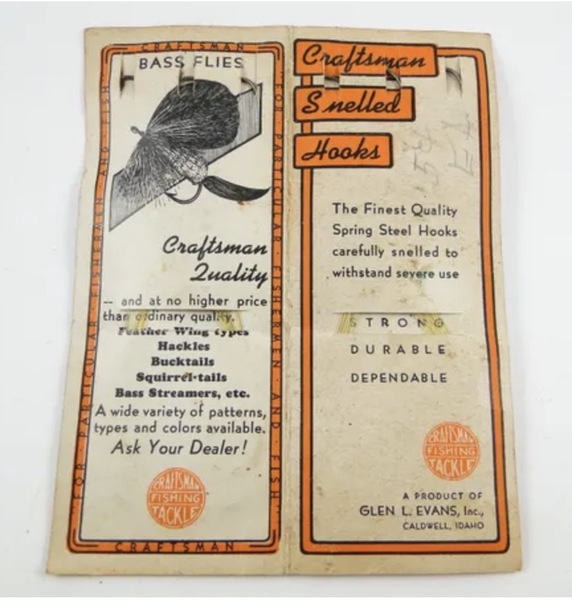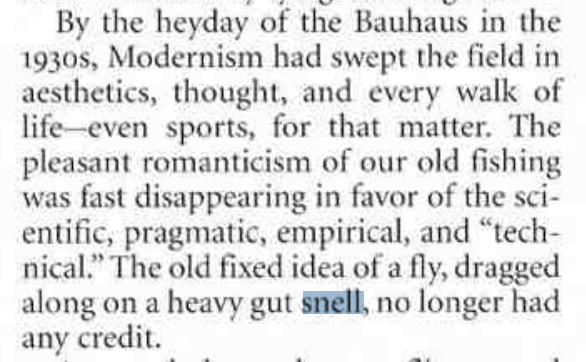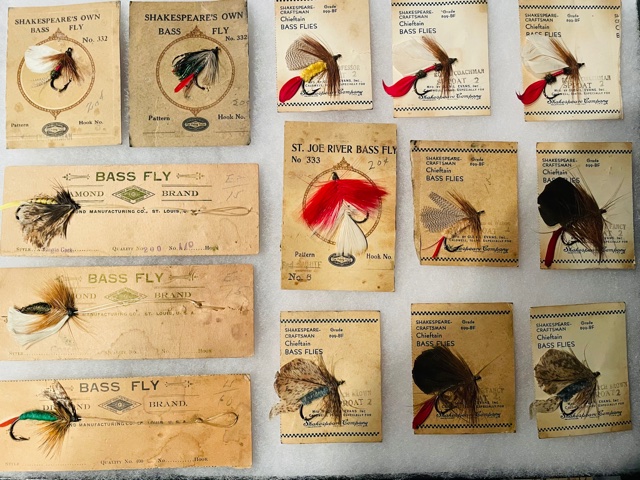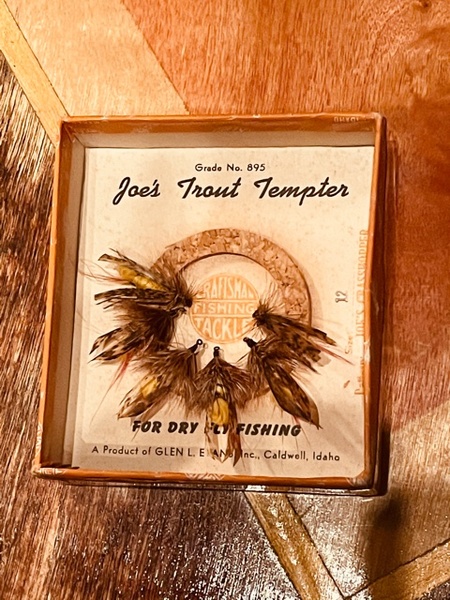From what I could gather:
"Craftsman" was used by Glen Evans of Caldwell, Idaho, Craftsman Fishing Tackle, Glen L. Evans, Caldwell, Idaho
that became Glen L Evans Inc (Shyster spinner, Bear Valley spinners, ...). Craftsman Bass Flies existed, so possibly Shakespeare acquired them?

Dates unknown, but I found this from the American Museum of FF Winter 2004, suggesting that snelled flies began to give way to non-snelled ones in the 1930's. :

Glen L Evans, Inc. was involved, at some point, in: “artificial flies ; leaders ; snelled hooks ; Japanese gut ; fish hooks ; silkworm gut”, and the below mentioned trade catalog below may be retrievable:
https://americanhistory.si.edu/collecti ... AHTL_26796
LOCATION
Trade Literature at the American History Museum Library
COLLECTION
Smithsonian Libraries Trade Literature Collections
In 1942, Ray Bergman published a book on bass fishing, “Ray Bergman - Freshwater Bass” that would likely have had influence. He has a chapter on fly-fishing and there is a plate of “Bass Flies”:

most are essentially enlarged trout patterns, and a few are still essentially giant wet-flies, like those in your image, and like the “Lake Flies” from the late 19th century Orvis books, but sans snelled leader.
Best guess? late 30’s though the 40’s? I could see them hanging on in tackle shops much later though -in fact remembering some in the dusty corners of mom-n-pop take shops into the 70’s. But they rapidly gave way to newer designs as can already be seen in Bergman’s 1942 plate. He was cutting edge though.
Just some fodder for thought.
P.S.: I wonder if the "St. Joe River Bass Fly" was a take-off, in name only, on the Tomah Joe Wet Fly, named after a famed Algonquin fishing guide of the late 1800's. His fly was featured in the 1882 CF Orvis Fly Fishing book and developed a following:
https://midcurrent.com/flies/the-tomah- ... ian-guide/




